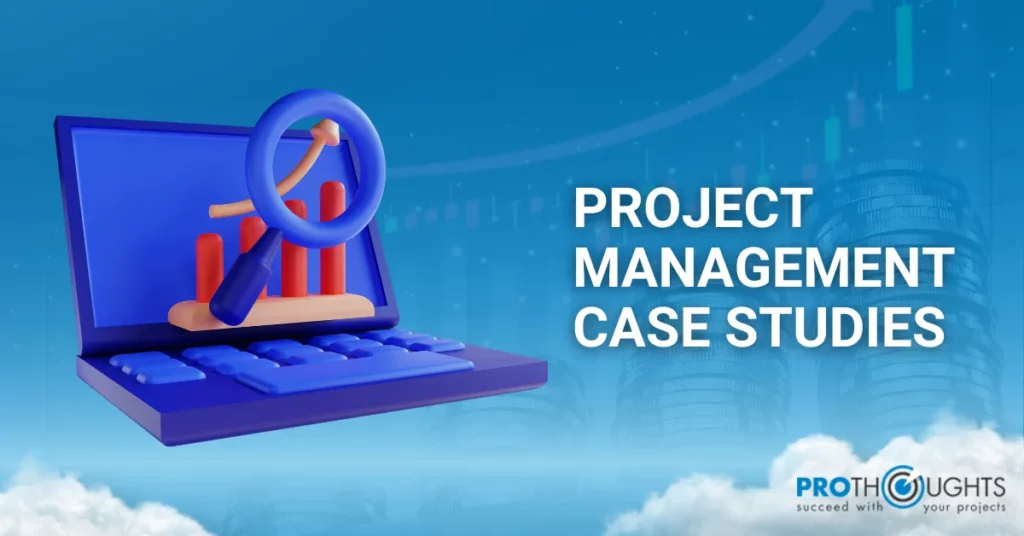
Real cases are the concrete material for those who want to go into professions. The ten real-world project management case studies with examples look into successful project management strategies and emphasize the need for proper planning, communication, and problem solutions. They show us different sectors of the economy, from technology, construction, health, and many others. The case studies will help you develop a deeper knowledge of how project management tools are implemented in different situations. It doesn’t matter whether you are a project manager or aim to get certified as a PMP; the case studies will be instrumental in that. Through this analysis, high project management significance is demonstrated and the strategies as well as means of achieving project success become clearer.
Brief Overview of Project Management
Process management involves scheduling, execution, and completion of tasks in a planned and interconnected way to achieve desired goals in a timely. Practical application: utilizing knowledge, resources, and processes to achieve project objectives efficiently. Moreover, project management aims to deliver customized outcomes within specified constraints like scope, time, cost, quality, and risk.
Lastly, the matter fact that effective project management needs good leadership skills, excellent communication, risk management, and the ability to change according to the circumstances becomes vital. Therefore, various project management methodologies, such as Agile, Scrum, and Waterfall, provide frameworks for guiding through their project life cycles.
Top 10 Project Management Case Studies and Examples
The following are the summaries of ten project management case studies and examples that highlight various aspects of successful project execution and lessons learned:
Case Study 1: The Sydney Opera House
The renowned Sydney Opera House is one of the world’s iconic symbols for architecture. This particular place is situated in Sydney, Australia. The project took off in the middle of the 1950s to produce a world-class entertainment facility towering the city skyline. The competition for the structure design was won by the Danish architect, Jørn Utzon with him becoming the lead of the building team, and the construction commenced immediately the following year.
Also, the design of the Opera House returns its shell-like constructions that are quite problematic both esthetic and engineering. It intended to produce a space that would be home to a diverse range of performing arts activities and become a symbol of Sydney, achieving this goal through a combination of its function and transformative design.
Subsequently, the Sydney Opera House case study is regarded as an important source of experience for project managers and they continue to underline the necessity of developing a holistic approach that involves leading practicians, highly efficient teamwork, and powerful project governance to be able to manage this kind of project successfully.
Case Study 2: NASA’s Mars Rover Mission
NASA farms the Mars Rover mission to discover and gain insight into the surface of the planet. Within these tracked roving vehicles are two-wheeled Sojourner, Spirit, Opportunity, and Curiosity alongside the most recent one Perseverance. All rovers had these instruments on board for Martian surface analysis, looking for traces of space biology, and studying the core history of the planets.
In addition, the program involves all-encompassing planning, impeccable calculations, and sophisticated technology to deliver impeccable results. For the discovery of the Moon’s geological dynamics, each rover was a testament to space exploration as well as robotics in scientific investigations.
Astronauts aboard Mars Rover involve the use of effective project management, risk identification, and adaptability, which are the keys to space exploration. This is another example of how such missions provide a learning and also development opportunity for future space exploration endeavors.
Case Study 3: The London Olympics 2012
Its aim was an uncomplicated worship of the Summer Olympic and Paralympic Games which accepted athletes and spectators from the whole world as the participants. These world-changing constructions revolutionized and greatly influenced the everyday life of Londoners, shaping their way of life significantly.
Nevertheless, the London Olympics set a legacy beyond the lasting success of the event. Furthermore, authorities converted and repurposed the infrastructure surrounding Olympic Park for public use, stimulating urban regeneration efforts. The project management best practices for event planning are centered around environmental conservation measures, economic impact, and community intervention.
Case Study 4: Apple’s iPhone Development
Apple inc.; making the iPhone is the epitome of complex product development. There was no such thing as the iPhone in 2007, just a phone that was much more than that magical device that incorporated a phone, iPod, and internet communication appliance into a single thing.
Designing a quality product involves integrating high-tech hardware, software, intuitive user interfaces, and various technologies seamlessly.
Apple’s iPhone exemplifies agile innovation, quality-speed balance, and lasting market impact, driving unparalleled business success.
Case Study 5: The Panama Canal Expansion
The 2016 announcement of the Panama Canal Extension addressed the need for accommodating larger vessels amid global seaborne trade growth. The first canal built, finished in 1914, could not have been a passageway for the size and capacity of these days’ ships. Additionally, the extension project targeted these inadequacies and intended to uplift the channel’s performance in terms of time-saving and upgrading the global shipping sector.
To conclude, the Panama Canal is an excellent example of how much infrastructure developments are needed as the world is rapidly changing. The project that stands behind the success of global collaboration and project risk management became the vehicle of a plan that influenced the way of doing international trade, and the Panamanian economy.
Case Study 6: The London Crossrail Project
The Crossrail London project, also called the Elizabeth Line, improves transportation connections in London through extensive rail network construction. The main goal is to design a straight east-west railway, spanning key city districts and neighboring territories.
Moreover, the London Crossrail line confronting the delays and overflows of funds, at last, created a disruptive shift in London public transport. In that respect, the positive results and public benefits show the role of major projects that focus on green transit infrastructure in creating urban connectivity and driving ecological and social development.
Case Study 7: The Big Dig – Boston Central Artery/Tunnel Project
The Big Dig, of the Boston, Massachusetts, Central Artery/Tunnel Project was this outstanding public works effort. The project aimed to enhance urban transportation by replacing the Central Artery with tunnels, bridges, and interchanges to expedite traffic.
The project required innovative engineering to tackle tunnel construction, soil conditions, and water management challenges. Moreover, effective public and political expectations management was critical, necessitating extensive public engagement, transparent communication, and collaboration across government entities.
Despite facing delays and cost overruns, completing the Big Dig in 2007 marked a transformative moment for Boston. The project achieved its goals of improving traffic, revitalizing urban areas, and driving economic growth through new developments. Therefore, the success of the Big Dig serves as a case study in adaptive project management, overcoming technical complexities, and achieving positive urban and economic outcomes in large-scale infrastructure projects.
Case Study 8: The Hoover Dam
Planners began the Hoover Dam project in 1936, aiming to meet water and electricity needs in the southwestern USA. Additionally, technologically innovative, the dam featured an arch-gravity design and introduced advanced concrete construction methods. Engineers overcame desert conditions using continuous pouring and refrigeration to counter high temperatures during construction.
Moreover, the Hoover Dam’s enduring impact includes water supply management by creating Lake Mead, one of the largest U.S. reservoirs. The power plant at Hoover Dam generates electricity for the regional grid, serving as a reliable and ongoing energy source. The dam has gained significance beyond its strict utilitarian role. The dam symbolizes America’s resilience and cleverness, drawing millions of visitors to appreciate its cultural, historical, and engineering significance.
Case Study 9: The Airbus A380 Project
The Airbus A380 holds this exceptional record and thereby symbolizes a development breakthrough in the aviation industry in 2007 respectively. The designers created the twin-deck, wide-body aircraft for maximum capacity and comfort, making it ideal for long-distance travel.
Also, it serves the global collaboration in aerospace engineering evidenced by the contributions of different countries as the project was taken as a whole. Moreover, the Airbus A380 project portrays the complexities of global collaboration, overcoming technical difficulties, and embedding oneself in the competition of the aerospace industry as well. The A380’s impact on aviation underscores lessons in adaptation and environmental consciousness for shaping tomorrow’s airline transportation.
Case Study 10: The Hubble Space Telescope Repair Mission
The HST Mission repaired the telescope’s optical issues, unleashing its full astronomical potential and overcoming initial obstacles. Starting in 1990, Hubble had a manufacturing problem in one of the primary mirrors, which caused blurred images. As a consequence of that day, NASA carried out the first mission of servicing (STS-61) in 1993. Astronauts conducted a complex EVA to install WFPC-2 optics on Space Shuttle Endeavour, addressing Hubble’s optical issues.
However, this repair mission showcased the collaborative efforts of NASA and astronauts, emphasizing meticulous training, communication, and problem-solving skills. The success of the mission marked a turning point for Hubble, transforming it into a premier astronomical observatory. Subsequent servicing missions further upgraded instruments, extending Hubble’s lifespan and contributing to groundbreaking scientific discoveries.
Conclusion
These top 10 project management scenarios showcase real-world industry challenges in action. Thus, from the dissertation of the given cases, you can be more capable of leading your projects appropriately. Would you like to elevate your expertise? Join our project management course package now, which covers everything from detailed instructions to hands-on experience.
